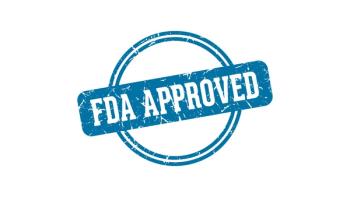
FDA Grants Priority Review to Lurbinectedin for Patients with Small Cell Lung Cancer
The Food and Drug Administration granted a priority review to the new drug application for lurbinectedin to treat patients with small cell lung cancer.
The Food and Drug Administration (FDA) granted a priority review designation to lurbinectedin to treat patients with small cell lung cancer (SCLC) who have progressed following platinum-containing therapy, according to PharmaMar and Jazz Pharmaceuticals.
The designation is based on findings from a multicenter, single-arm phase 2 basket trial, designed to evaluate the safety and efficacy of lurbinectedin in patients across advanced several solid tumors, including SCLC.
Treatment with lurbinectedin induced a 35.2% overall response rate, which consisted of all partial responses occurring in 37 of 105 patients. An additional 35 patients had stable disease, leading to a disease control rate of 68.6%.
Overall, 65% of patients had a decrease in tumor size and responses occurred in five of eight patients who had failed prior immunotherapy. Twenty-eight patients (26.7%) had progressive disease and five patients were not evaluable.
The median duration of response was 5.3 months. The response rate was higher in patients with platinum-sensitive disease, where the overall response rate was 45% compared with 22.2% in patients with resistant disease.
Overall, the median progression-free survival (the time from treatment to disease progression or worsening) was 3.9 months and the six-month progression-free survival rate was 33.6%. In the chemotherapy-sensitive subgroup, the median progression-free survival was 4.6 months and the six-month progression-free survival rate was 44.6%. In the resistant population, the median progression-free survival was 2.6 months and the six-month progression-free survival rate was 18.8 months.
At a median follow-up of 17.1 months, the median overall survival was 9.3 months and the 12-month overall survival rate was 34.2%. The median overall survival was 11.9 months in sensitive patients versus five months in resistant patients.
The most common grade 1/2 side effects were fatigue (51.4%), nausea (32.4%), decreased appetite (21.0%), vomiting (18.1%), diarrhea (12.4%), constipation (9.5%), and neutropenia (5.7%). Grade 3/4 AEs included neutropenia (22.9%), anemia (6.7%), fatigue (6.7%), thrombocytopenia (4.8%), febrile neutropenia (4.8%), pneumonia (1.9%), increased alanine aminotransferase level (1.9%), skin ulcer (1.0%) and diarrhea (1.0%).
The agency is set to make its decision by Aug. 16, 2020.





